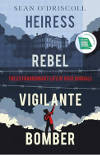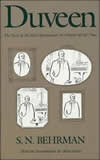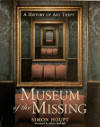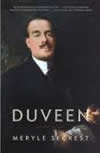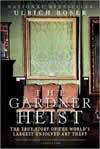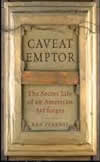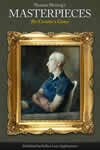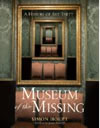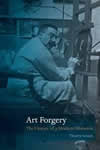On May 1, 1986, the Lady Writing with her Maid, the only Vermeer in private ownership, was again stolen from the Russborough House. Instead of storming the house as Rose Dugdale and her Irish Republican Army compatriots had done in 1974, the thieves broke in quietly, at 2 a.m., cutting a pane of glass out of one of the French doors that opened to the back of the property. The infrared alarm sounded, the thieves exited the house and hid behind some thick bushes. Retired Irish army Col. Michael O'Shea, administrator of the Beit collection, toured the building's ground floor but found nothing suspicious; he and the police, who had arrived shortly after, decided it was a false alarm. An hour later the thieves entered the house again, and in just six minutes, took 18 paintings. The loss of this Vermeer and the others was discovered just before 9:00 a.m. that morning. The paintings were valued upward of $45 million.


Johannes Vermeer
c. 1670–1671
Oil on canvas, 71.1 x 58.4 cm.
National Gallery of Ireland, Dublin
A detective at the scene was quoted as saying ''The IRA is short of cash and they may have stolen the pictures again for ransom."
Instead, the heist was headed by Martin Cahill, an infamous Irish thug, nicknamed "The General" owing to his daring criminal exploits. Fortunately, Sir Alfred Beit, now 83, was in London at the time of the theft. The next day, seven of the eighteen paintings (the least commercially valuable) were discovered in a ditch by boys going fishing near the mansion, four miles from the scene of the crime. All were in good condition.
The remaining eleven pictures were hidden in a bunker that had been prepared in advance. Cahill was the police's first suspect, but the gangster was so powerful in the Dublin underworld that fear of retaliation stopped all potential informants. There were rumors about the paintings being hidden in the Wicklow Mountains, but there were no solid leads.
Sir Alfred Beit declared that the stolen pictures were so well known "they are virtually unsaleable on the market." "I cannot think it could be other than some sort of revolutionary movement like the IRA or the National Liberation Army of Ireland who will probably seek a ransom which they won't get," he said. Beit inherited the core of his collection through his father, Sir Otto Beit, brother of a diamond millionaire and partner of Cecil Rhodes, the African empire builder.
Cahill held the Vermeer for a ransom of £20 million; however, as Sir Alfred foretold, the money was not paid. Cahill lacked the right contacts to pass it on to international art-theft rings: the Beit paintings were simply too famous to attract a buyer. According to a Radio Telefís Éireann report, Cahill's taste in art extended only to "cheery scenes like the cheap print in his living room of swans on a river, but he believed the stolen masterpieces would bring him a fortune." Some of the gang members later said Cahill had treated the fragile paintings with contempt.
In 1990, one of the stolen paintings turned up in the heroin circuit of Istanbul, while two years later, another work was taken from a van transporting drugs in London. The Vermeer was said to have been deposited in a Luxemburg bank vault.
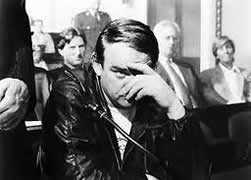
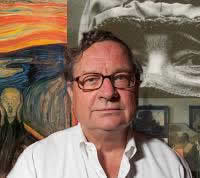
On September 1, 1993, in Antwerp, the Lady Writing a Letter with her Maid was recovered by Scotland Yard art detective Charlie Hill, who had posed as a buyer. Hill was born in Britain and brought up mostly in America. The recovery was made from the trunk of a car rented by three Irishmen and a Yugoslav. The painting was wrapped in trash bags, and with it was Goya's Portrait of Dona Antonia Zarate. The coup made Hill an overnight star—the world's greatest art detective.
Hill later declared that in his career of art-theft sleuth, "my greatest thrill" was finding Vermeer's Lady Writing a Letter with her Maid. "Seven years [after the theft], I put on a mid-Atlantic accent and posed as an art dealer who had Arab buyers lined up for the Vermeer. At the time, I was working in Scotland Yard's Art Squad. I was taken to a multi-storey car park in Antwerp by a gangster, and had to mask my emotions as I unwrapped the painting. It's the greatest masterpiece I've had the pleasure to hold." Hill later recovered Titian's Rest on the Flight to Egypt and was one of two undercover officers who recovered Edvard Munch's The Scream after it was stolen from the National Gallery, Oslo in 1994.
After the police had recovered the painting, a restorer found a pinprick hole in the center of the eye of the seated woman, which he originally thought was damage from the theft. Instead, it was discovered that Vermeer had employed a well-known seventeenth-century technique whereby by a string was attached to a pin hole placed at the picture's vanishing point and pulled tight in order to verify the orthogonals of the scene's perspective.
The police later reported that Vermeer's painting had served to guarantee a million-pounds loan from diamond dealer so that Cahill could buy drugs. "The idea was that Cahill would take the million pounds, invest it in another criminal enterprise and then repay the loan, with the Vermeer once more returning to him, to be used as collateral in future deals. The Vermeer, worth tens of millions on the open market, was thus given the value of one million pounds on the black market."Noah Charney, "Art Theft in Connecticut: Gone Baby, Gone," Connecticut.com, December 2012,. Luckily, the Vermeer was rescued just before it disappeared into criminal underworld, perhaps, for good.
Cahill was subsequently murdered, most likely, by the IRA for helping supply weapons to pro-England Volunteers or for importing heroin, a drug that the IRA despised and were trying to prevent from being sold in Dublin. Cahill was shot in the face and upper torso by an unknown gunman armed with a .44 Magnum revolver, who then fled on a motorbike.
A movie "The General" was made about Cahill's notorious life of crime. Although he had masterminded many major crimes in Ireland, the Gardai had been unable to pin anything on him. When brought to court for minor offenses, he defiantly posed outside for press photographers, dropping his trousers to reveal a pair of Mickey Mouse boxer shorts.
† FOOTNOTES †
Thefts, forgeries & the Van Meegeren case
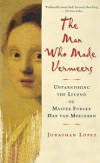 The Man Who Made Vermeers: Unvarnishing the Legend of Master Forger Han van Meegeren
The Man Who Made Vermeers: Unvarnishing the Legend of Master Forger Han van MeegerenJonathan Lopez
2009
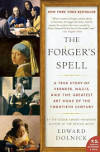 The Forger's Spell: A True Story of Vermeer, Nazis, and the Greatest Art Hoax of the Twentieth Century
The Forger's Spell: A True Story of Vermeer, Nazis, and the Greatest Art Hoax of the Twentieth CenturyEdward Dolnick
2009
